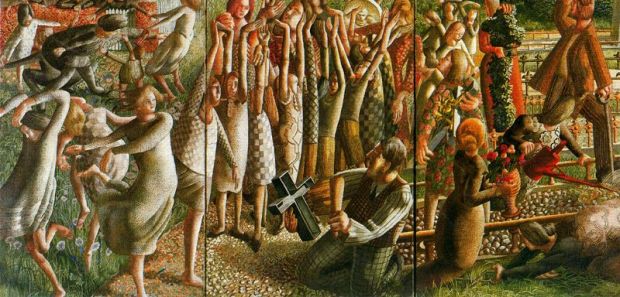One of the most beautiful buildings in the world has survived twenty centuries since its construction during the great age of Rome. Replacing two earlier buildings lost to fire, this third one was built for the ages. After two thousand years, its coffered concrete ceiling remains the largest unreinforced concrete dome in the world, and it still evokes awe and wonder among architects. The building is, of course, the Pantheon. Unlike some buildings of equal stature and antiquity, the Pantheon has survived because it was, in effect, ‘baptized.’ Having been a temple whose practices were anchored in pagan religious cults, its original Greek name suggests the building was dedicated to a multitude of Roman God’s. Indeed, many modern visitors know the building only by its classical name rather than by its later Christian one, even though the transition between the two occurred fourteen-hundred years ago!
Think about that for a moment. A pagan temple, apparently dedicated to a panoply of Roman deities, was consecrated as a church, and renamed to commemorate Christian saints. The building’s earlier purpose and meaning was not seen as dangerous to it being used for holy Christian worship! For many of us, that is unimaginable! A more likely outcome would have been for the building to have been razed, and its materials perhaps reused to build an entirely new building for Christ-inspired liturgies. This represents courage, the courage of holy imagination, turned loose to see what is good, positive and hopeful, even amidst a decaying or already dead civilization.
On Good Friday and at the Easter Vigil, we pray these words: “O God of unchangeable power and eternal light: Look favorably on your whole Church, that wonderful and sacred mystery; by the effectual working of your providence, carry out in tranquillity the plan of salvation; let the whole world see and know that things which were cast down are being raised up, and things which had grown old are being made new, and that all things are being brought to their perfection by him through whom all things were made, your Son Jesus Christ our Lord.”
Who among us has not ever felt cast down, prematurely old, or just not worth much? Do we have courage, the courage to see that we are among all the things that are being brought to their perfection? Sometimes, among all the things God has made, it can be hardest to imagine ourselves as the objects of God’s unbounded creative and redemptive possibilities. Yet, because of our Baptism, we are among the saints who have already passed beyond death into new life. God’s redemptive possibilities are all about new life, and for us! We come to see this as we practice the virtue of holy imagination.
A photo of the interior of the Pantheon in Rome (creative commons license). This is adapted from my homily for All Saints Sunday, which can be accessed by clicking here.



